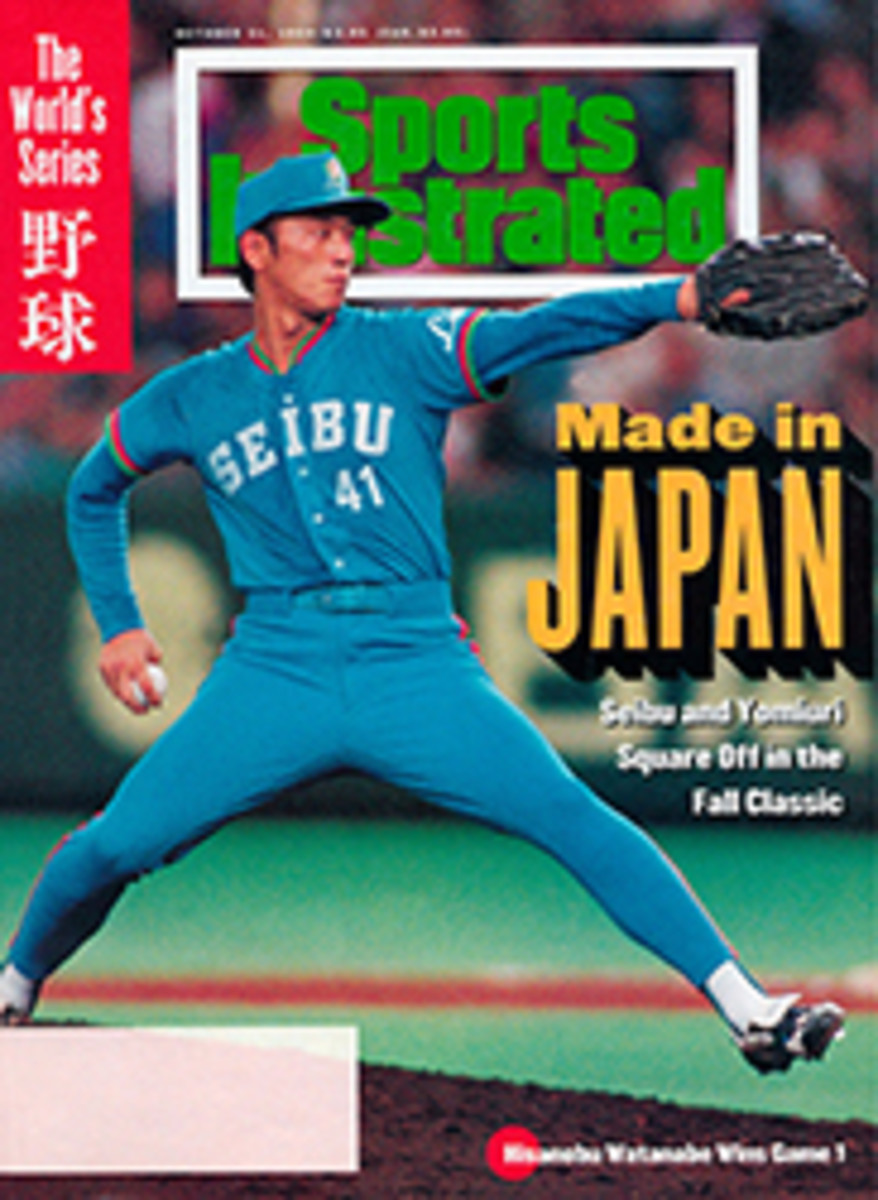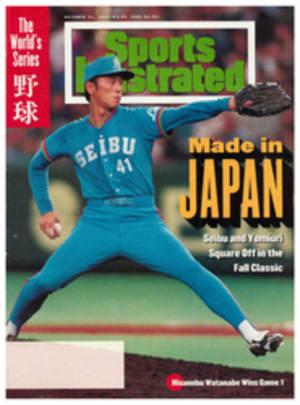
Golf
Long Lost Links
In the blue-green haze of a West Virginia morning last week, a few miles northeast of The Greenbrier and the Solheim Cup competition, Sam Snead perched his walnut-hard gutta-percha ball on a pinch of sand, gripped his hickory-shafted brassie and gazed out over the 1st hole at Oakhurst Links. For the edification of the small crowd gathered to watch him play a few holes on the oldest golf course in the United States, Snead pointed to a half dozen sheep on a nearby fairway and remarked, "Those are the mowing machines at work." Then, with a swing still as sweet and smooth as homemade custard, Snead lifted the ball into the chilly autumn air and watched it disappear, far and sure, over a small hill.
Oakhurst Links, which until last week had not been used for nearly 80 years, was founded in 1884 by four native Scotsmen and a transplanted Bostonian, Russell Montague. Laid out over 35 acres of Montague's private estate, the nine-hole course played to 2,700 yards, with fairways which frequently crisscrossed because of the limited flat spaces for the postage stamp-sized greens. At the time, golf was so new in the States that a curious public would often drive out in coaches from the Springs to watch what one spectator of the day described as "grown men following a big marble over the hills."
After four of the five founders moved away in the early 1900s, the course lay abandoned until Lewis Keller, a Virginia real estate developer, avid golfer and a longtime friend of Snead's, bought the property in 1960 from Montague's 82-year-old son, Cary. Thirty-four years (but only four months of excavation) later, Oakhurst Links is nearly ready for regular play again.
When Oakhurst officially reopens next spring, its limited membership of 300-400 golfers will be allowed to play the twisting course using only wooden-shafted clubs and gutty-type balls. They will no doubt find the course more difficult to play than Snead did last week. A cleek in his hand, Snead hit his second shot on the par-4 1st hole right at the pin; it flew the green, settling in some thick grass on a severe downslope several yards behind the hole. The legendary wedge player wasted not a moment, carving the air with an ancient iron and dropping the ball three feet from the makeshift pin. Snead flashed his crafty, confident smile, and the tiny crowd cheered.
Somewhere, Russell Montague did too.
Rookie of the Year
One of this season's most impressive newcomers is the Michelob/PGA Tour 19th Hole, a 77,000-pound interactive playground on wheels. The 19th Hole is billed as a fan information and entertainment display, and it doesn't fall short in either category.
The multimedia information system has two touch-screen monitors that give the intrepid fan access to a bevy of facts about regular and Senior Tour players and tournaments. Player information is literally at the fingertips, as are updated stats for scoring average, driving distance and the money lists. Past tournament results and even hole-by-hole aerial photographs of the course being played that week can be called up, and there are two other monitors that have updated scoring for the event in progress.
An enclosed theater for 10 houses a 60-inch video screen on which a loop of highlights and bloopers is shown. Just outside the theater, features on the Tour's charity and alcohol awareness programs as well as a live Iced from the tournament's television coverage can be viewed on TV screens. Despite the availability of all that information, however, the crowds are predictably drawn to the interactive entertainment.
There are six Sega Genesis units tucked into a corner, and to the delight of the adolescent set that uses them, the 10-minute maximum is not strictly enforced. But the youngsters' enthusiasm pales in comparison with that of the grownups who are taken in by the swing analyzer and the golf simulator.
The analyzer is every muddled hacker's dream. A sophisticated series of infrared sensors breaks down any golfer's swing and displays the information on an adjacent computer screen. Club-head speed, angle of impact, the path of the club and point of impact on the face are all revealed in an enlightening display of swing mechanics.
The golf simulator is even more impressive. A would-be golfer can play any hole from 13 world-class courses, including Pinehurst Number 2, Firestone Country Club and the Belfry. At the press of a button the image of the hole is beamed onto a 9-by-10-foot high-resolution projection screen. Participants then whack actual golf balls toward the screen, and a computerized tracking system takes some 60,000 measurements during the split-second that the ball is in the air, determining, among other things, its speed, rotation, distance and flight path. The shot's outcome is then beamed onto the screen with a potentially depressing realism that includes splashes in the water and ricochets off trees.
The 19th Hole can be set up in 10 to 12 hours and folded up in four to live, into a 53-foot trailer. It has appeared at 25 tournaments this year and will wrap up the season at the Tour Championship at San Francisco's Olympic Club this week. There is no charge to use any of the displays, though voluntary donations are taken for local charities.
Training Grounds
Notice to all wannabe PGA Tour stars: Forget foreign tours, mini-tours and the college tour. The Nike Tour, formerly the Hogan Tour, has become the place to hone your game.
"Five years from now we are going to see the PGA Tour filled with Nike Tour players," says Tom Lehman, who played that tour in 1990 and '91. "And in 10 years, Nike alumni are going to be the dominant players on the PGA Tour."
Lehman isn't just a giddy alumnus gloating about his alma mater. The PGA Tour already has a lot of Nike alumni. Of the 125 players who made enough money this season to keep their PGA Tour playing cards for 1995, 25 have Nike experience.
Nike alums are already among the dominant players on the PGA Tour. This season three of the Top 10 money winners on the Tour—Lehman (third), Jeff Maggert (ninth) and Mike Springer (10th)—are Nike alums, and eight of the 42 events on the Tour were won by former Nike players, including the U.S. Open (Ernie Els), the Memorial (Lehman), the BellSouth Classic (John Daly) and the Greater Greensboro and Milwaukee opens (both by Springer).
Despite its plethora of talent, the Nike Tour has existed in relative obscurity since it began in 1990. The only event ever televised was this year's Nike Tour Championship, on ESPN. That will change in 1995, when The Golf Channel will broadcast from 10 to 18 Nike events.
PHOTO
TWO PHOTOS
JACQUELINE DUVOISIN
Snead teed off at the country's oldest course, which, after years of neglect, will reopen in spring.
PHOTO
COURTESY OF THE NELSON FAMILY
Sergeant Nelson was a 'Nam point man.
PHOTO
PETE FONTAINE/PGA TOUR
Springer has taken his Hogan Tour experience to the bank this season on the PGA Tour.
MULLIGANS
Wacky facts from the world of golf
•Larry Nelson was a point man in Vietnam.
•U.S. Solheim Cup team members Betsy King, Beth Daniel and Dottie Mochrie all went to tiny Furman College in Greenville, S.C.
•The longest sudden-death playoff in Tour history—between Cary Middlecoff and Lloyd Mangrum at the 1949 Motor City Open—lasted 11 holes and ended in a tie.
•All 1,000 brand-new practice balls were pocketed by the competitors at the 1991 British Amateur.
•Susan Daniels was a pharmacist in Australia before she joined the LPGA.
•Bruce Lietzke is Kirstie Alley's first cousin.
•Calvin Peete didn't take up golf until he was 23.
•A player cannot participate in any PGA Tour event until he has paid the Tour's $100 annual membership fee.

